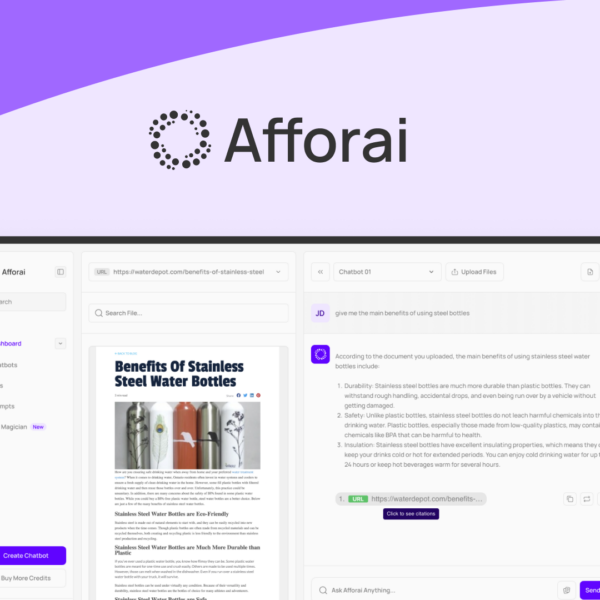In the world of business, embracing SaaS products can be a game-changer—especially those enticing lifetime deals. But how do you choose wisely?
Research the Company’s Background
When considering a SaaS product, the first step is to research the company’s background. Check how long they’ve been in business. A company with a stable history often means reliability.
Look for customer reviews online. This will give you insight into their service quality. Are customers satisfied? Do they face consistent issues? These comments can help you make an informed choice.
You can also investigate their leadership. A strong team with experience in the industry often reflects a company’s commitment to growth and innovation.
Certifications and Awards
Check for any certifications or awards the company may have received. This shows they meet industry standards and have gotten recognized for their work. Being honored by credible organizations can boost your confidence in their product.
Staying Updated
It’s important to see if the company keeps up with current trends. Do they regularly update their software? Are they incorporating user feedback into their improvements? An active innovation approach shows they’re dedicated to their users.
Researching these aspects will help ensure you choose a SaaS product that fits your business needs and stands the test of time.
Evaluate Recent Features Released

When choosing a SaaS product, it’s crucial to evaluate recent features released. This helps you understand how the product is evolving.
Check the company’s website or their blog for updates. Many companies share details about new features that show their commitment to improvement.
Look for features that solve common problems. For example, if the software enhances collaboration or streamlines processes, these are good signs.
User Feedback on New Features
User reviews can reveal how well new features work in real life. Are customers happy with the latest updates? Do they find the features useful? This feedback can guide your decision.
Competitor Comparison
Compare these features to what competitors offer. This can help you see if the SaaS product you’re considering is keeping up with industry standards. If it lacks features available in other products, it might not be the best choice.
Finally, consider how often updates are made. A company that regularly releases new features shows they’re dedicated to improving their service.
Analyze the Product Roadmap
To make an informed choice, you should analyze the product roadmap of the SaaS product. A roadmap gives insight into where the product is headed.
Start by looking for the roadmap on the company’s website. It often shows planned features and improvements. A clear roadmap indicates a company is focused on growth and listening to its users.
Check how often the roadmap is updated. Regular updates mean the company is active and responsive to feedback. This is a good sign of commitment.
Feature Prioritization
Understand which features are prioritized. Are they addressing common customer needs? If the roadmap focuses on features that matter to users, it’s a positive indicator.
Future Vision
A good roadmap also shows the company’s future vision. Look for plans regarding technology advances or industry changes. This helps you determine if the product will remain relevant.
By analyzing the product roadmap, you can better gauge if the SaaS product aligns with your long-term business goals.
Communicate with Customer Support

When selecting a SaaS product, it’s vital to communicate with customer support. Good support can make a huge difference in your experience.
Start by checking their support options. Do they offer live chat, email, or phone support? Multiple options give you flexibility on how to reach them.
Test the support team. Send them a question before you commit. How quickly do they respond? Are the answers clear and helpful? This gives you a sense of their responsiveness.
Availability and Hours
Look for their support hours. Are they available 24/7, or only during business hours? If you plan to use the product outside regular times, round-the-clock support is crucial.
Resources and Knowledge Base
Check if they have a knowledge base or help center. Articles and video tutorials can be great resources for troubleshooting issues on your own. This can save you time in the long run.
Communicating with customer support early can help ensure that you choose a SaaS product that will support you effectively as your needs grow.
Assess Current and Future Needs
It’s essential to assess current and future needs when choosing a SaaS product. Knowing what you need now helps avoid issues down the road.
Start by listing your current requirements. Consider what features are must-haves for your business today. This includes functionality like collaboration tools, reporting capabilities, and user accessibility.
Next, think about future growth. Will your business expand or change direction? Choose a product that can grow with you. Look for features that are scalable and customizable.
Anticipate Changes
Anticipating changes can save you time and money later. If you plan to add more users or locations, ensure the SaaS can handle this without major upgrades.
Flexibility and Integration
Check if the software integrates well with other tools you use. A flexible platform can adapt to new needs and work with existing systems. This ensures a smoother workflow.
By assessing both current and future needs, you can select a SaaS product that supports your goals effectively.




